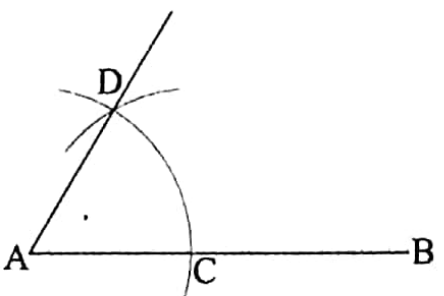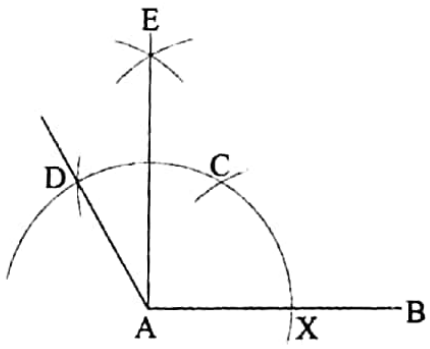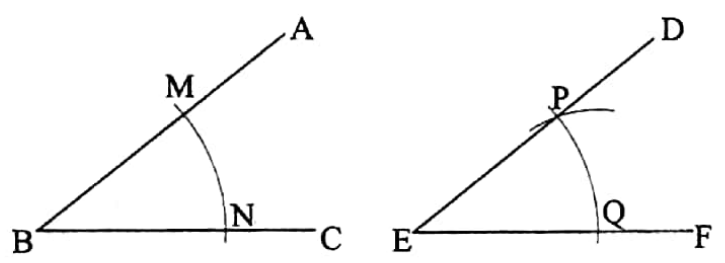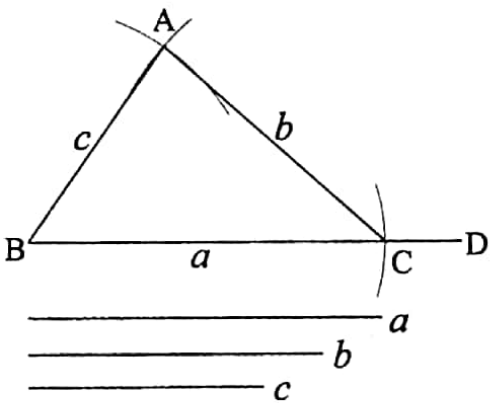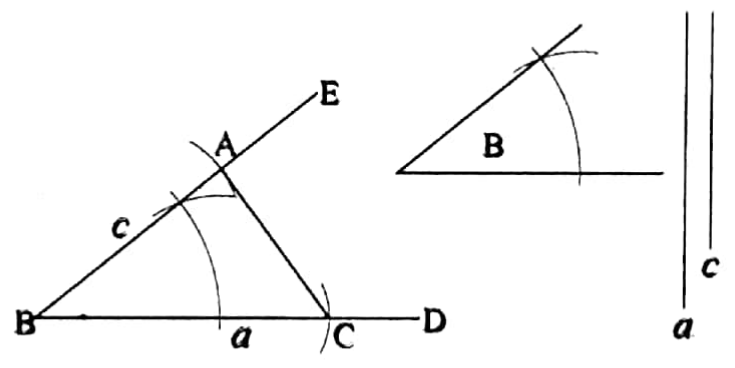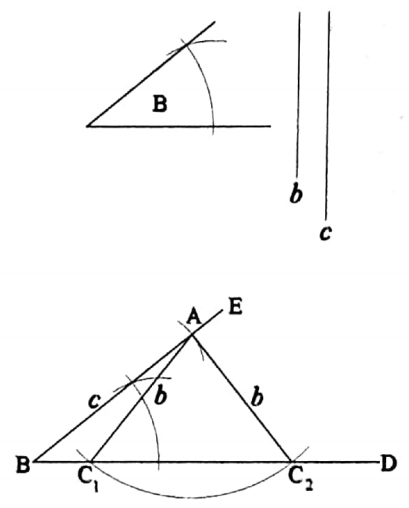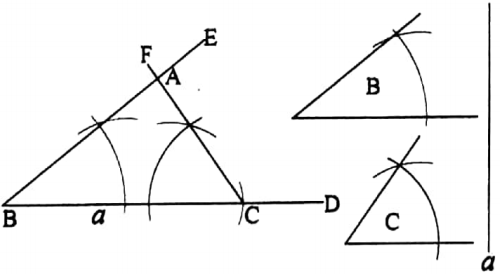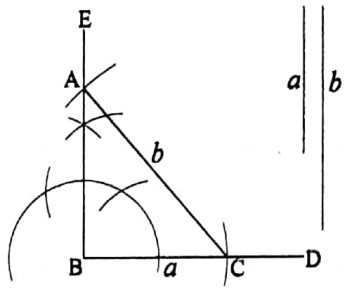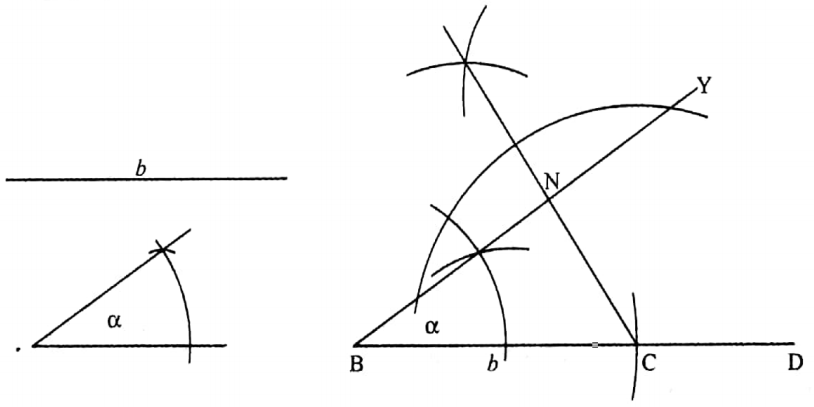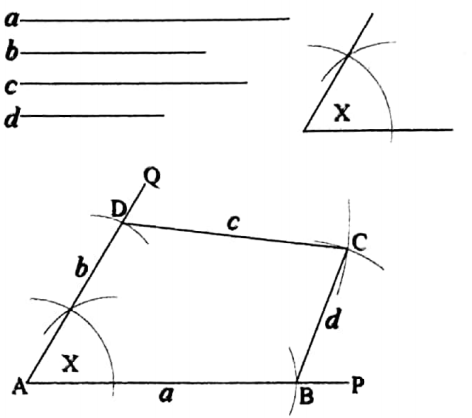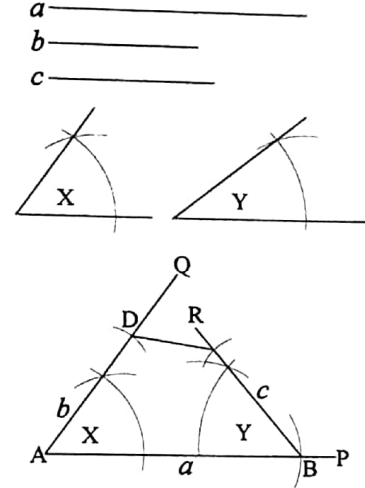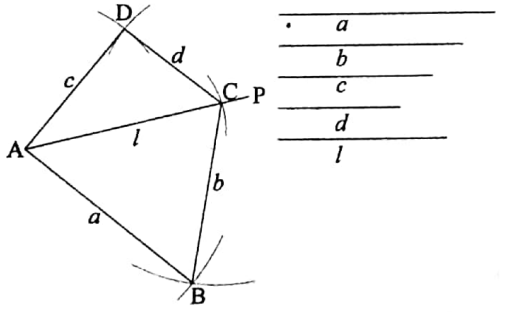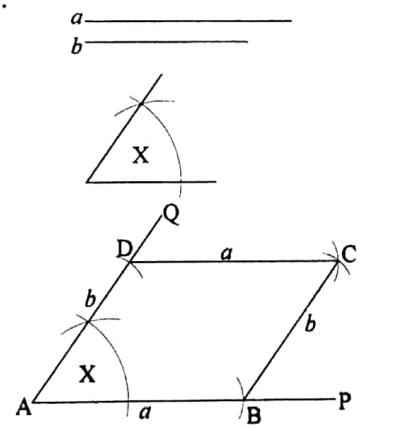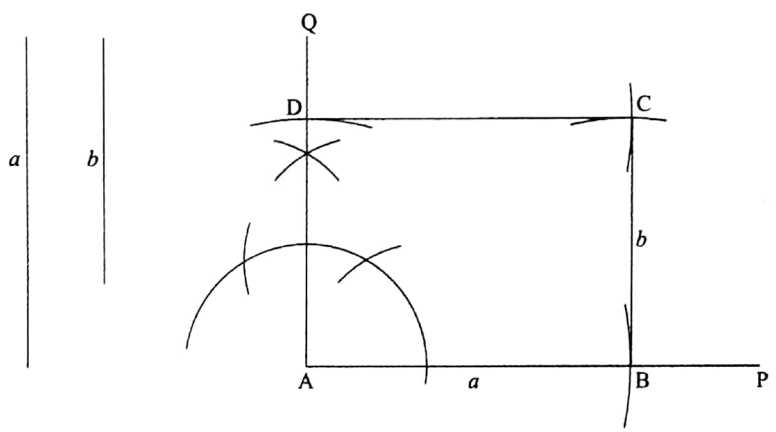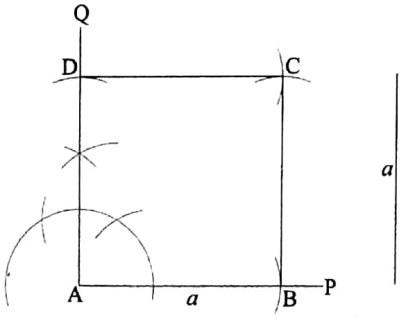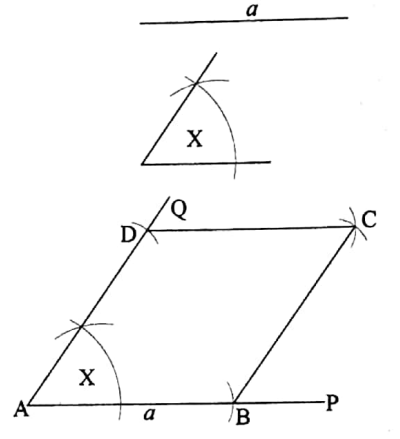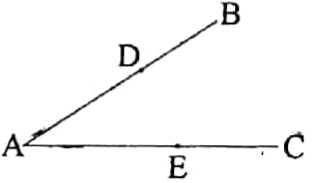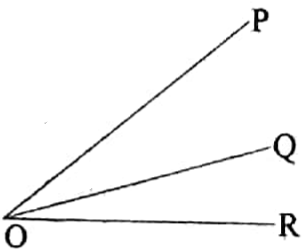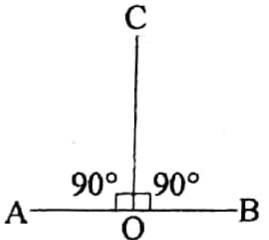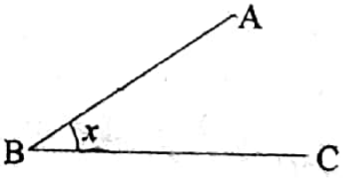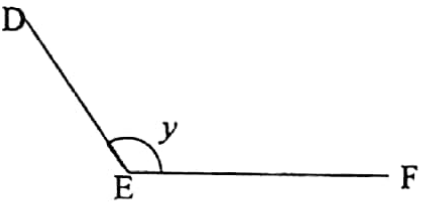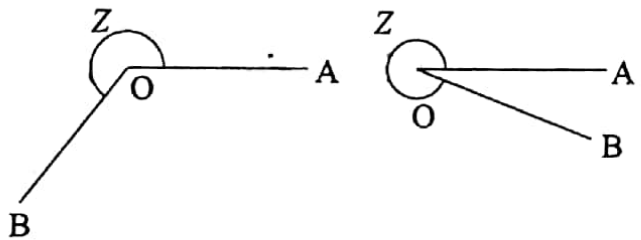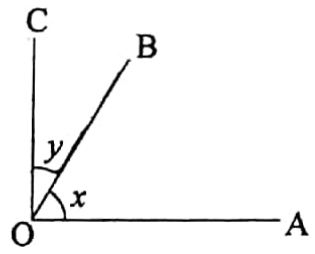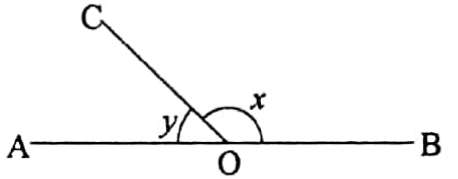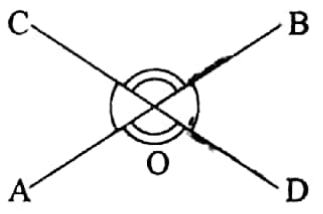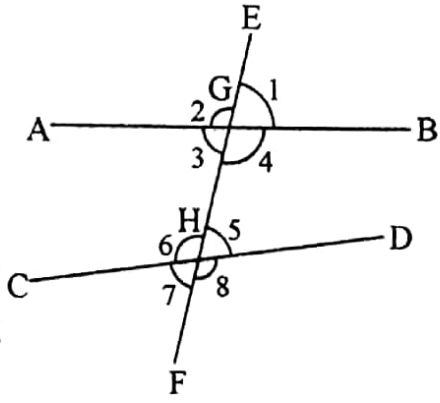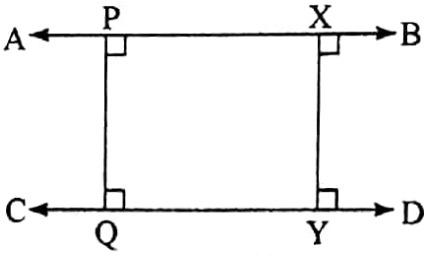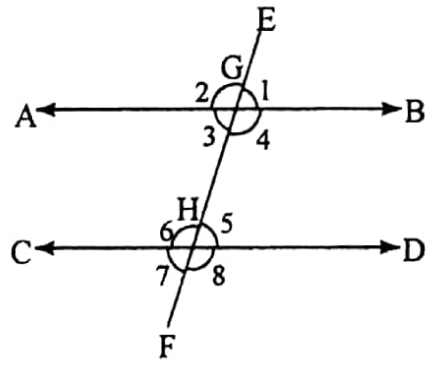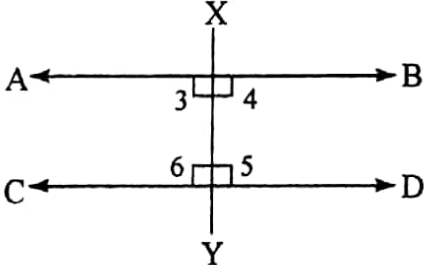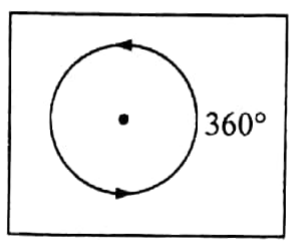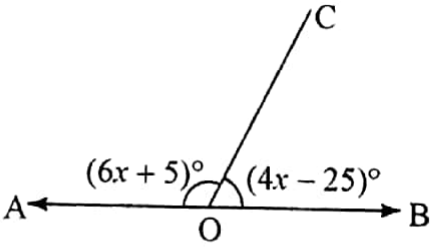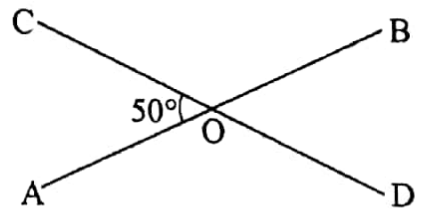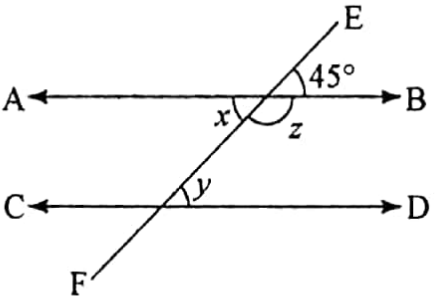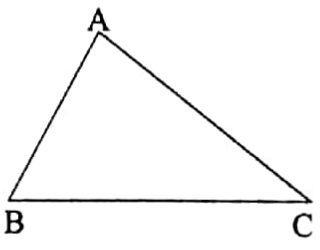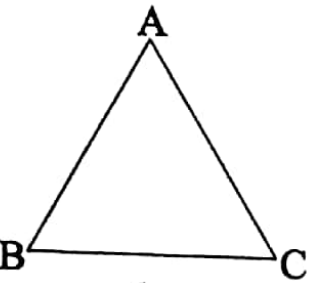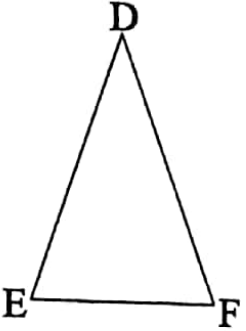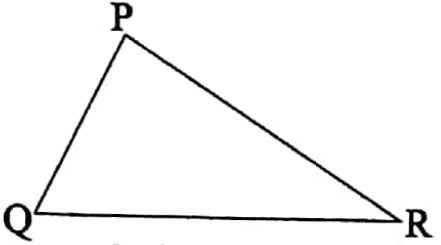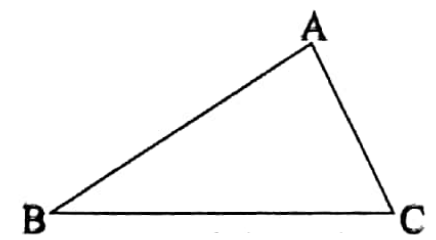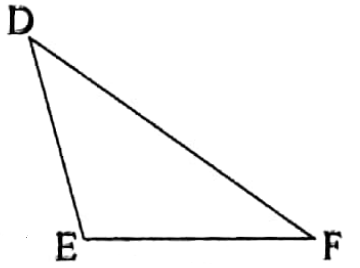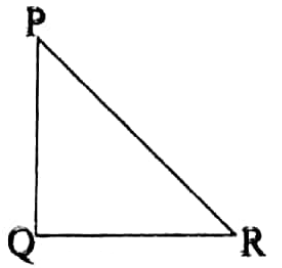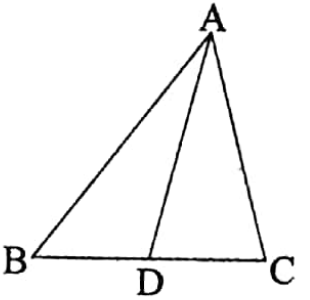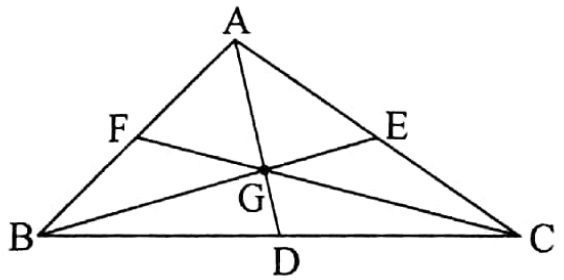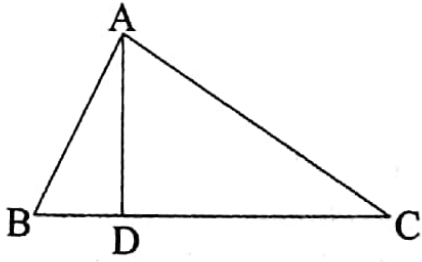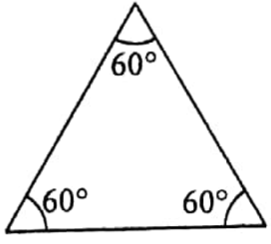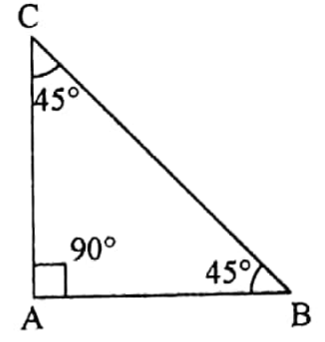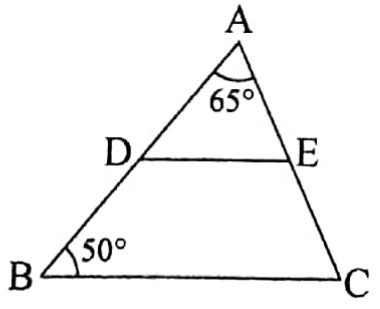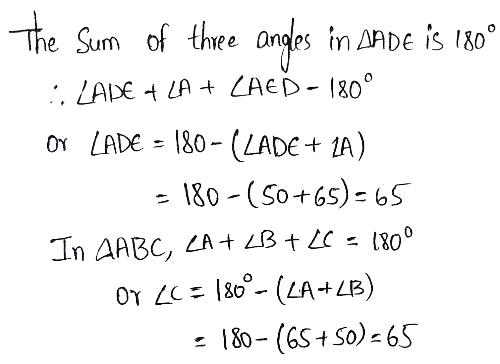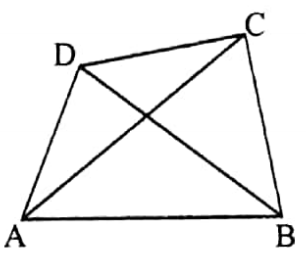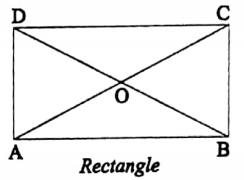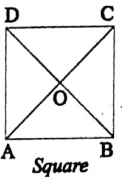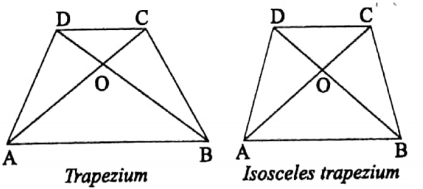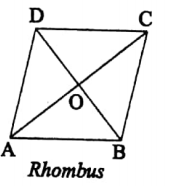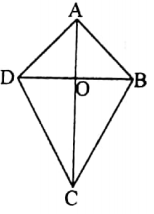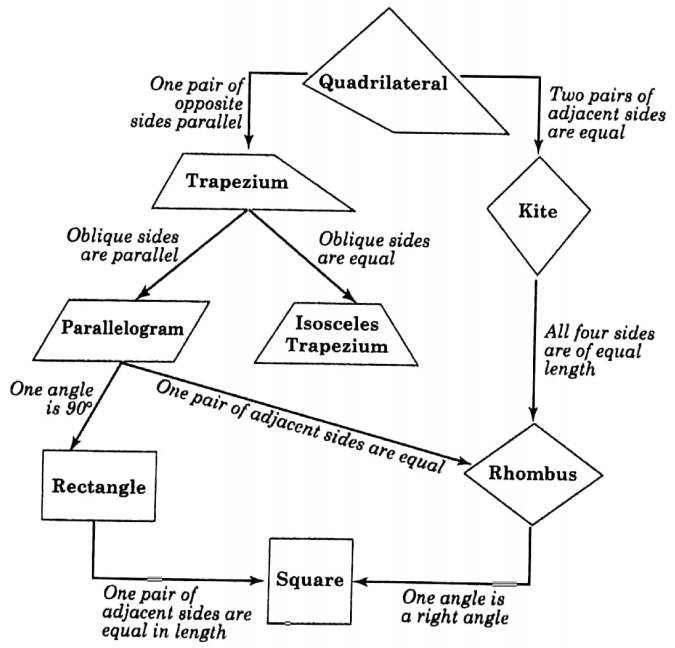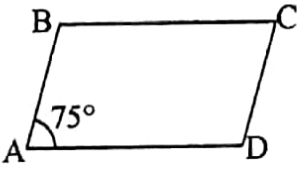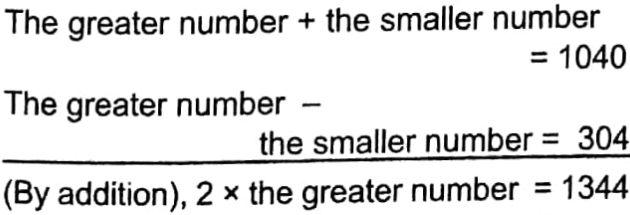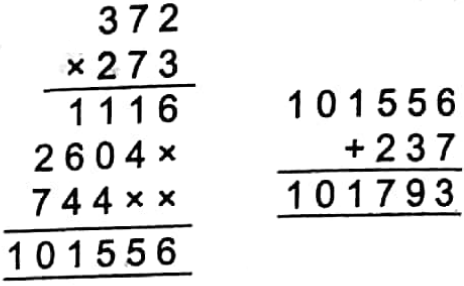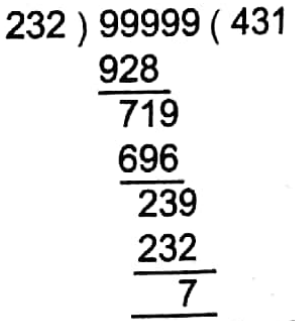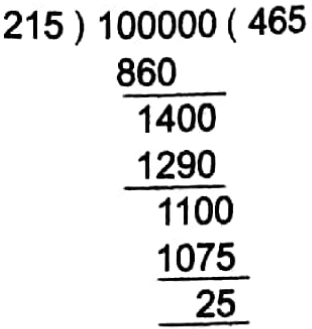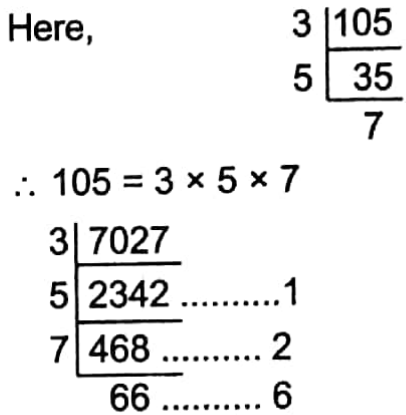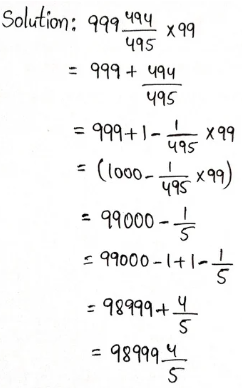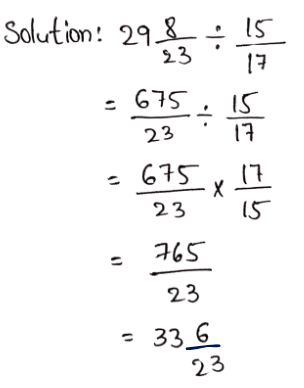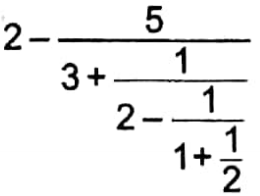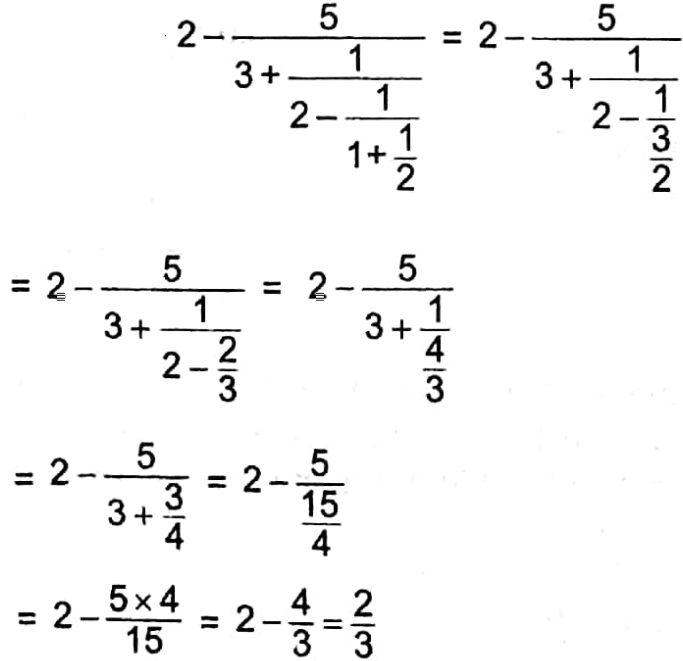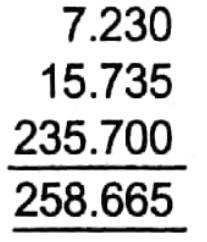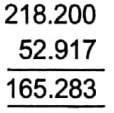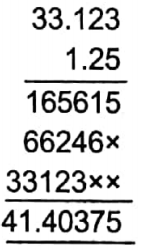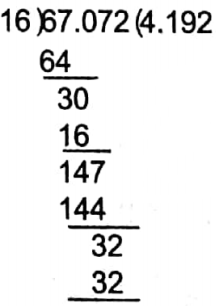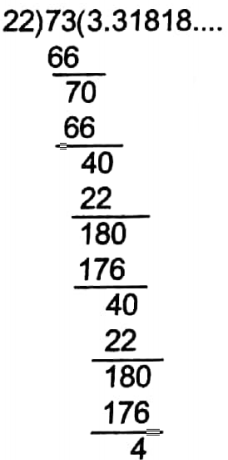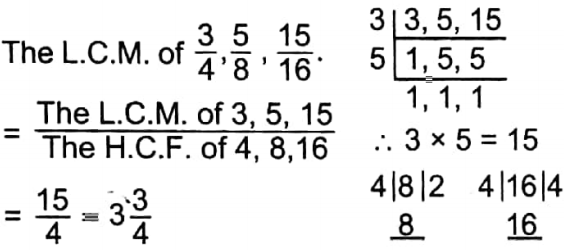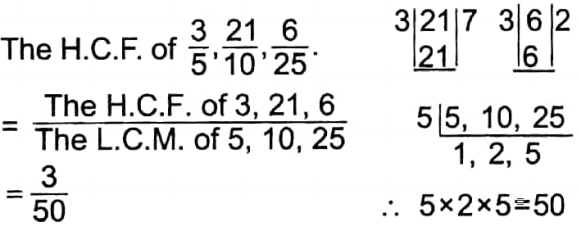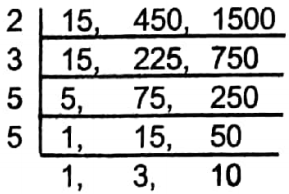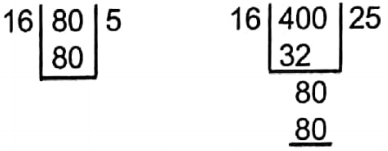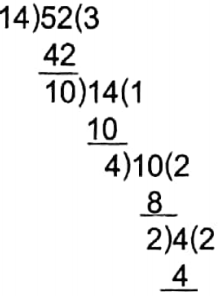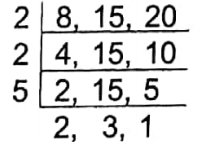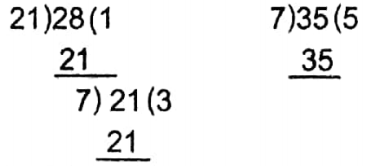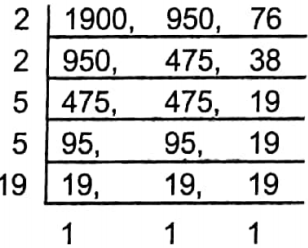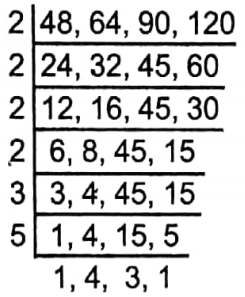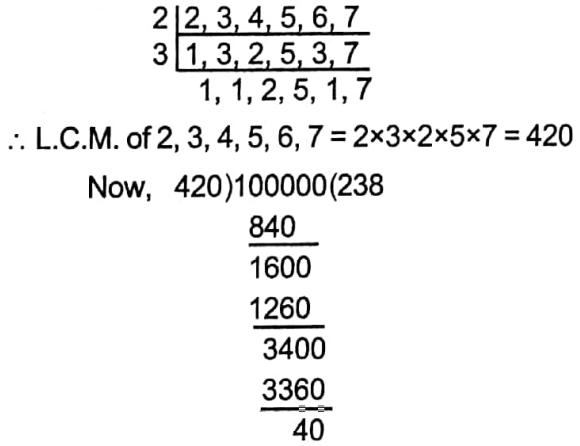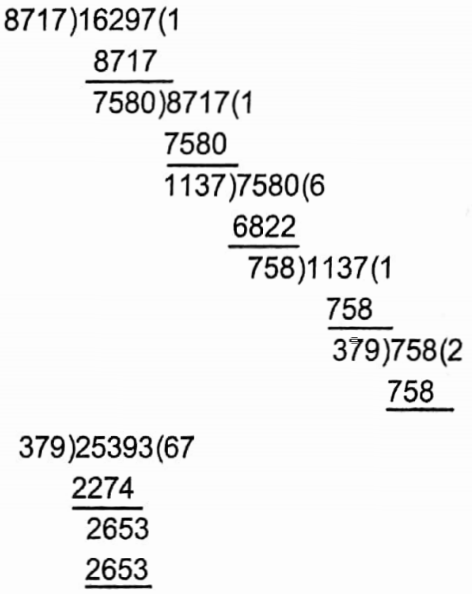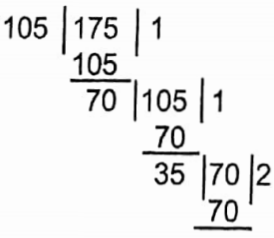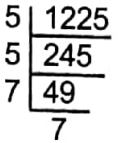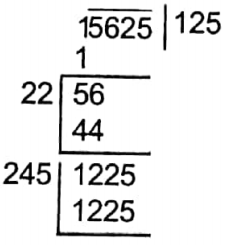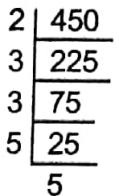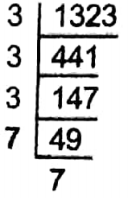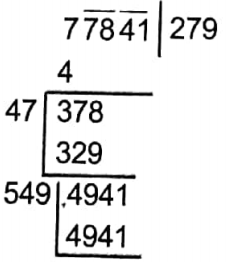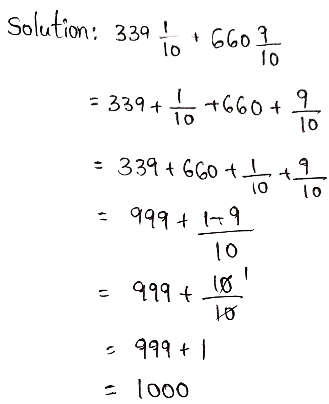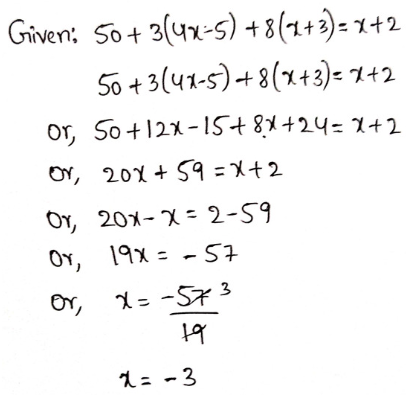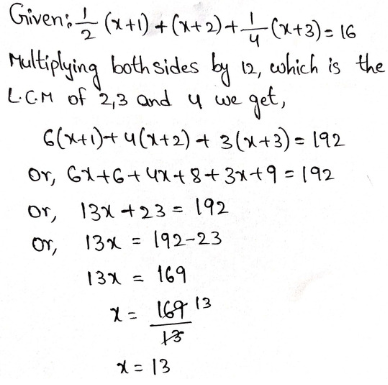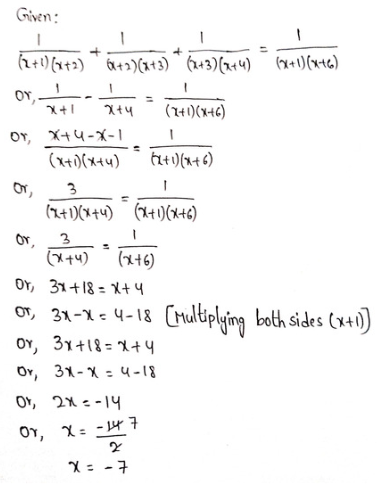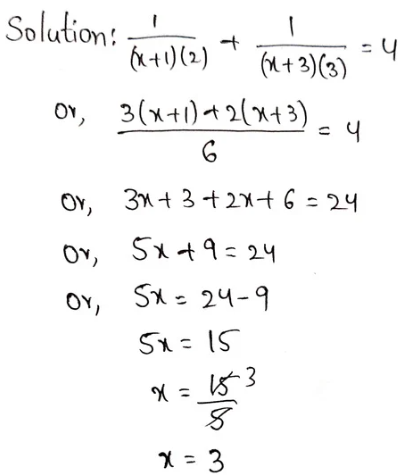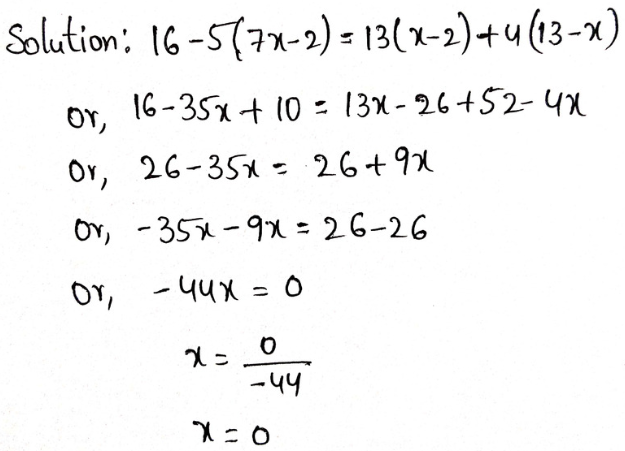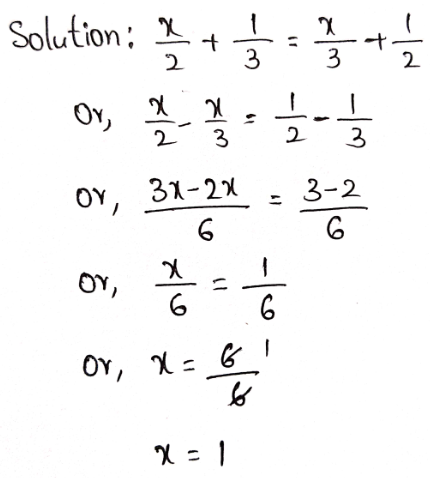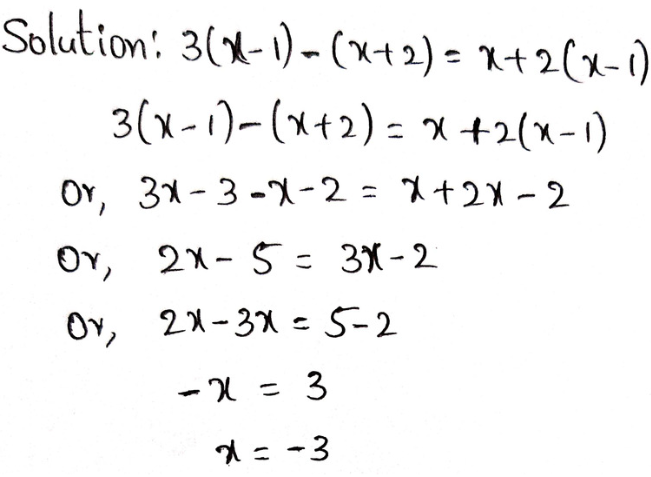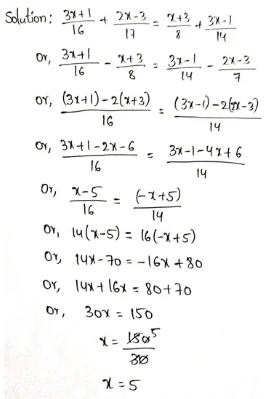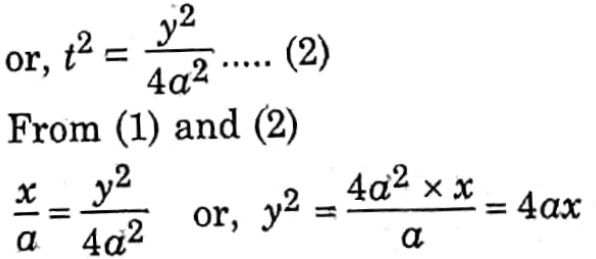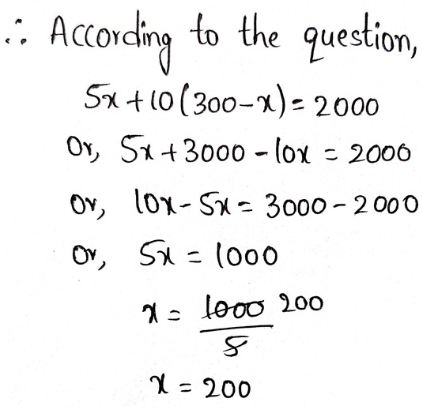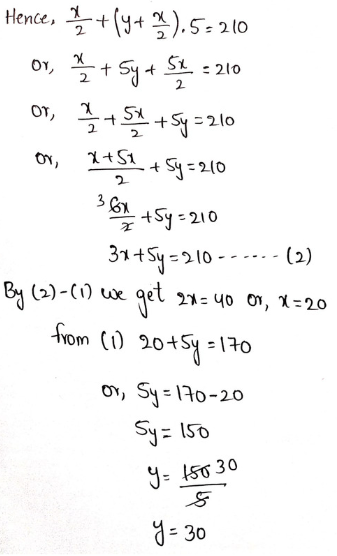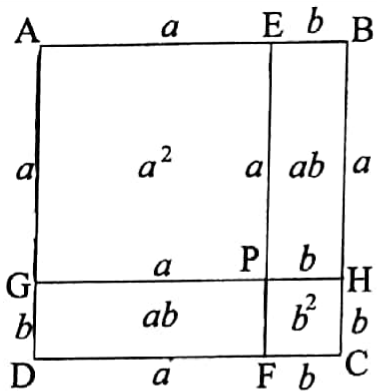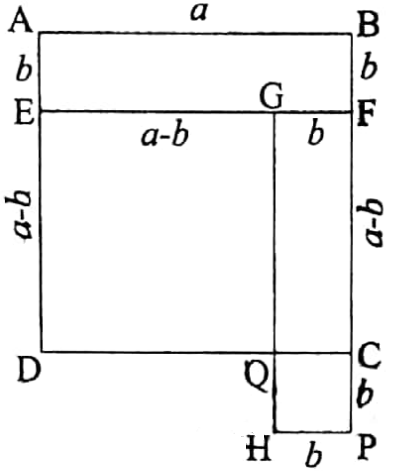Arithmetic Chapter 2 Ratio And Proportion Exercise 2 Solved Example Problems
Comparison of two quantities
In our practical life it is very often required to compare two quantities in terms or their magnitudes or measurements.
In fact, there are two ways of comparing quantities. We can compare two quantities either by finding the difference between them or by dividing one quantity by the other.
When we compare two numbers by division then we are determining the ratio.
Read and Learn More WBBSE Solutions For Class 7 Maths
Thus, while comparing two quantities of the same kind, the fraction expressed by how many times the first quantity is greater or smaller than the second quantity is called the ratio between the two quantities.
Suppose, a bowl of fruit contains ten apples and six oranges, then the ratio of apples to oranges is ten to six i.e., 10:6, equivalent to 5:3.
In this example the ratio of oranges to apples is 6:10 i.e., 3:5. Also, the ratio of apples to the total amount of fruits is 10: 16 or 5:8.
Mathematically speaking, if x and y are two quantities and the numerical value of y ≠ 0 then the fraction \(\frac{x}{y}\) is called the ratio of x to y and is written as x:y.
Nature of a ratio
The ratio is the quotient of two quantities of the same kind and same unit, which compares the quantities. Hence, the ratio being a fraction is an abstract number and has no unit.
The quantities forming the ratio are called the terms of the ratio in which the first number is called the antecedent while the second one is called the consequent.
∴ Ratio = antecedent consequent: antecedent consequent
= \(\frac{antecedent}{consequent}\)
Illustration with Images
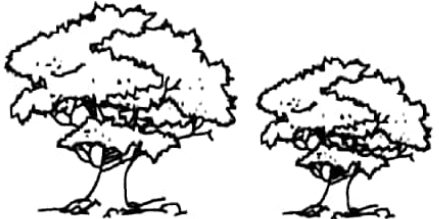
In Image 1, the height of the first tree is 40 meters and that of the second tree is 30 meters. Hence, the height of the first tree: height of the second tree = 4:3.
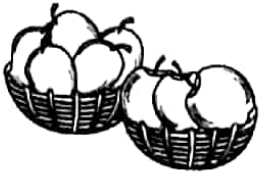
In image 2, in the first basket, there are 5 mangoes and in the second there are 3 mangoes.
Hence, the number of mangoes in the first basket: and the number of mangoes in the second basket = 5:3.
Also, we know that water occupies 3 parts of the Earth’s surface and land occupies 1 part of the same.
Hence, we can say that, area occupied by water: area occupied by land = 3: 1.
The symbol ‘:’ is used to denote the ratio. Thus the ratio 5 to 9 is written as 5:9 and it is read as ‘five is to nine.’
Determination of the ratio of two quantities
We can determine the ratio of two quantities of same kind. In determining the ratio, the quantities are to be expressed in the same unit.
Example: Ratio of 1 meter and 25 cm.
= \(\frac{1 meter}{25 cm}\) = \(\frac{100 cm}{25 cm}\)
= \(\frac{4}{1}\) = 4:1.
Ration of ₹ 6 and ₹ 1.52 p
= \(\frac{₹ 6}{1.50 P}\)= \(\frac{600 P}{150 p}\) = \(\frac{4}{1}\)
Concrete is a mixture of stone chips, sand and cement, normally in the ratio of 4:2:1 by volume. So there are 4+2+1 = 7 items altogether. So, the quantity of each component of concrete is
stone chips = \(\frac{4}{7}\), sand = \(\frac{2}{7}\) and cement = \(\frac{1}{7}\) part.
A ratio has no unit because it is an abstract number.
The ratio of two quantities of different kinds is not possible.
Thus 5 hours: 75 cm is inadmissible, as the comparison is not possible in this case.
Inverse ratio
If two ratios be such that, the antecedent and the consequent of the one are respectively equal to the consequent and antecedent of the other, then they are said to be inverse ratio.
Example: The inverse ratio of 2:5 is 5:2 and also the inverse ratio of 5:2 is 2:5.
Types of ratio
There are mainly two types of ratios, namely simple and compound.
Simple ratio: The ratio between two quantities of the same kind is called a simple ratio. For example, 20 cm: 25 cm 4:5 is a simple ratio.
Compound ratio: The ratio whose antecedent is the product of the antecedents of two or more simple ratios and whose consequent is the product of the consequents of those ratios is called a compound ratio of those simple ratios.
For example, the compound ratio of 2:3, 3:4 and 4:5 is (2 × 3 × 4): (3 x 4 x 5) or, 2:5.
Different types of simple ratio Simple ratios are of three different types namely
- Ratio of greater inequality
- Ratio of equality
- Ratio of less inequality.
Ratio of greater inequality: The ratio in which the antecedent is greater than the consequent is called a ratio of greater inequality. For example, 25: 17.
Ratio of equality: The ratio in which the antecedent is equal to the consequent is called a ratio of equality. For example, 5:5.
Ratio of less inequality: The ratio in which the antecedent is smaller than the consequent is called a ratio of less inequality. For example, 9: 19.
Some important points about ratio
1. Since the ratio can also be considered as a fraction its value remains unchanged when both its antecedent and consequent are multiplied or divided by the same number.
Except for the ratio of equality, the value of a ratio is changed when a number is added to or subtracted from its antecedent and consequent.
2. If we add a number both to the antecedent and consequent of a ratio of greater inequality, its value will decrease.
For example:
9: 5 = \(\frac{9}{5}\); \(\frac{9 + 3}{5 + 3}\) = \(\frac{12}{8}\) = \(\frac{3}{2}\); \(\frac{3}{2}\) < \(\frac{5}{5}\)
3. If we subtract a number both from the antecedent and consequent of a ratio of greater inequality its value will increase.
For example:
9: 5 = \(\frac{9}{5}\); \(\frac{9 – 3}{5 – 3}\) = \(\frac{6}{2}\) = \(\frac{3}{1}\); \(\frac{3}{1}\)> \(\frac{9}{5}\)
4. If we add a number both to the antecedent and consequent of a ratio of less inequality, its value will increase.
For example:
5:9 = \(\frac{5}{9}\); \(\frac{5 + 3}{9 + 3}\) = \(\frac{8}{12}\) = \(\frac{2}{3}\); \(\frac{2}{3}\)> \(\frac{5}{9}\)
5. If we subtract a number both from the antecedent and consequent of a ratio of less inequality its value will decrease.
For example:
5:9 = \(\frac{5}{9}\); \(\frac{5 – 3}{9 – 3}\) = \(\frac{2}{6}\) = \(\frac{1}{3}\); \(\frac{1}{3}\)< \(\frac{5}{9}\)
A ratio can be expressed as a fraction. Hence, the processes applicable to the fractions are also applicable to the ratios.
For example:
1. A ratio can be expressed in the lowest form.
2. Some ratios can be converted into ratios having the same consequences.
Proportion
The equality of two ratios is called proportion. Suppose, in 3 days you can work out 45 sums and in 6 days you can work out 90 sums.
Hence, ratio of the number of days = 3:6, which in the simplest form is 1: 2.
Also the ratio of the sums worked out by you is 45: 90, which in the simplest form is 1: 2. Thus here we observe that 3:6=45:90.
Let us consider another example. If milk costs 15 per liter, the cost of 15 liters of milk is ₹ 225 and the cost of 20 liters of milk is ₹ 300.
The ratio of two quantities of milk = 15 liters: 20 liters = 15:20, which in the simplest form is 3 4.
Also the ratio of the costs of milk = ₹ 225: ₹ 300 = 225: 300, which in the simplest form is 3: 4.
Thus here we observe that 15:20 = 225: 300.
Definition: A proportion is the equality of two ratios.
We say that one ratio is proportional to the other and the four numbers forming the two ratios are in proportion.
Illustration In image 1, the ratio of bottles filled with milk: empty bottle= 2:1, and in image 2, the ratio of bottles filled with milk: empty bottle =4:2=2:1.
Since these two ratios are equal they are in proportion. When two ratios are
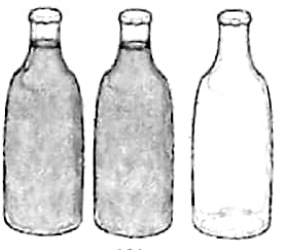
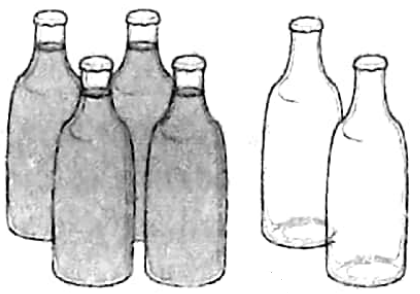
equal then instead of the sign of equality ‘ =’ we use the sign of proportion ‘: :’.
To express that, the ratio of 3 and 4 is equal to that of 9 and 12 we often write, 3:4: :9: 12. We read it ‘3 is to 4 as 9 is to 12’.
Inverse proportion or reciprocal proportion
If two ratios be such that, one of them is equal to the reciprocal of the other then we say that either of them is in reciprocal proportion of the other.
Suppose, you have to travel 400 km. If your speed is 20 km per hour then you will take 20 hours. If your speed is 25 km per hour then you will take 16 hours.
Thus, ratio of speed = \(\frac{20 km per hour}{25 km per hour}\) = \(\frac{4}{5}\)
The ratio of time required = \(\frac{20 hours}{16 hours}\) = \(\frac{5}{4}\)
Thus we see that, either of the above two ratios, is equal to the inverse of the other. These ratios are said to be in inverse proportion.
Continuous ratio
We may write the mutual ratio of many quantities of the same kind continuously with the sign of ratio.
For example: the ratio of ₹2, ₹8, ₹10, ₹16, ₹32
= ₹2: ₹8 : ₹10: ₹16: ₹32
= 2: 8: 10: 16: 32 = 1: 4: 5: 8: 16.
Continued proportion
If there be three quantities of the same kind such that the ratio of the first to the second is equal to the ratio of the second to the third then we say that the three quantities are in continued proportion.
Among the three quantities, the second quantity is called a mean proportional between the first and the third. The third quantity is called a third proportional to the first and the second.
Thus, 3, 6, and 12 are in continued proportion; because 3: 6 : : 6: 12.
Here 6 is a mean proportional between 3 and 12 and 12 is a third proportional to 3 and 6.
There may be a continued proportion of more than three quantities.
In that case, the first: the second = the second: the third = the third: the fourth = the fourth: the fifth = ….
For example, 1, 3, 9, 27, 81…. are in continued proportion.
Some properties of proportion
1. To test whether four quantities are in proportion or not we shall have to find the product of the first and the fourth and the product of the second and the third.
If these two products are equal then we say that the four quantities are in proportion; otherwise, they are not in proportion.
Example: 56: 25: 30. [Here 5 and 30 are called extremes. while 6 and 25 are called mean terms or quantities].
Here the product of the extremes i.e., the product of the first and the fourth = 5 x 30 = 150.
And the product of the means i.e., the product of the second and the third = 6 x 25 = 150.
Since these two products are equal, therefore the four quantities are in proportion.
2. If out of the 4 terms of a proportion, 3 are known, the third can easily be found out, by the following formulae.
- An extreme = product of the means ÷ the other extreme.
- A mean = product of the extremes ÷ the other mean.
3. If three quantities are in continued proportion, then the first: the second = the second: the third.
Hence, the first the third = (the second)2. Thus, 3, 12, and 48 are in continued proportion. Here, 3 x 48 = 144 = (12)2.
4. Let there be four quantities that are in proportion.
Then, by definition,
The first quantity: The second quantity = The third quantity: The fourth quantity.
Since the inverse ratio of two equal ratios are equal, therefore, the second quantity: the first quantity = the fourth quantity: the third quantity.
Thus, 4: 5 : : 28: 35.
∴ 5: 4 : : 35: 28.
5. If the four abstract numbers be in proportion then, the first: the third the second the fourth.
Thus 2: 5 = 6: 15
∴ 2: 6 = 5:15.
6. If the antecedent and the consequent of a ratio be multiplied or divided by the same number, the value of the ratio does not change.
Thus, 4:7 (4 x 5): (7 x 5) = 20: 35
Also, 10: 15 (105): (15+5)=2:3
Again, since 2:5=4:10
∴ (2x 3): (5 x 3) = (4 x 5): (10 × 5) Or, 6:15 = 20:50.
7. Let us mention some conclusions derived from proportion:
1. If \(\frac{a}{b}\) = \(\frac{c}{d}\) then
- \(\frac{b}{a}\) = \(\frac{d}{c}\) [invertendo]
- \(\frac{a}{c}\) = \(\frac{b}{d}\) [alternendo]
- \(\frac{a + b}{b}\) = \(\frac{c + d}{d}\) [componendo]
- \(\frac{a – b}{b}\) = \(\frac{c – d}{d}\) [dividendo]
- \(\frac{a + b}{a – b}\) = \(\frac{c + d}{c – d}\) [componendo and dividendo].
2. If \(\frac{a}{b}\) = \(\frac{c}{d}\) then each ratio = \(\frac{a + c}{b + d}\)
3. If \(\frac{a}{b}\) = \(\frac{c}{d}\) then each ratio = \(\frac{a – c}{b – d}\)
4. If \(\frac{a}{b}\) = \(\frac{c}{d}\) then each ratio = \(\frac{ma + nc}{mb + nd}\)
5. \(\frac{a}{b}\) = \(\frac{c}{d}\) = \(\frac{e}{f}\) = \(\frac{g}{h}\) = ….
= \(\frac{a + c + e + g + ……}{b + d + f + h + ……}\)(addendo).
Arithmetic Chapter 2 Ratio And Proportion Exercise 2 Some Problems On Ratio
Example 1. 1 kg of rice costs ₹ 40 and 1 kg of pulse costs ₹ 100. What is the ratio of the prices of rice and pulse?
Solution:
Ratio of the prices of rice and pulse
= \(\frac{₹40}{₹100}\) = \(\frac{2}{5}\) = 2.5
The ratio of the prices of rice and pulse 2.5
Example 2. Find the ratio of ₹ 1.50 to ₹ 3.50.
Solution:
Required ratio
= \(\frac{₹1.50}{₹3.50}\) = \(\frac{150 P}{350 P}\)
= \(\frac{3}{7}\) = 3:7.
Required ratio 3:7.
Example 3. In the triangle ABC, ∠BAC = 60°, ∠ABC = 50° and ∠ACB 70° : ∠BAC : ∠ABC: ∠ACB = what?
Solution:
∠BAC: ∠ABC: ∠ACB
= 60°: 50°: 70° = 60: 50: 70=6: 5: 7
Example 4. Find the ratio of 15 minutes to 1 hour 15 minutes.
Solution:
Required ratio
= \(\frac{15 minutes}{1 hour 15 minutes}\) = \(\frac{15 minutes}{75 minutes}\)
= \(\frac{15}{75}\) = \(\frac{1}{5}\) = 1: 5
Class Vii Math Solution Wbbse
Example 5. The price of a pencil is 3 and the price of toffee is 50 paise. What is the ratio of the prices of a pencil and a toffee?
Solution:
Price of 1 pencil: the price of 1 toffee 300 paise 6
= \(\frac{₹3}{50paise}\) = \(\frac{300 paise}{50 paise}\) = \(\frac{6}{1}\)=6:1
Example 6. What is the inverse ratio of 5: 9?
Solution: 9:5.
Example 7. What is the ratio of values of a 50 p coin, a rupee coin and a two rupee coin?
Solution:
The value of a 50 p coin: the value of a rupee coin: the value of a two rupee coin.
= 50 paise: 100 paise: 200 paise = 1:2:4
Example 8. Find the compound ratio of the following: 2:3, 5:4, 6:15.
Solution:
The compound ratio of 2:3, 5:4, 6:15
= \(\frac{2x5x6}{3x4x15}\) = \(\frac{1}{3}\) = 1: 3
Example 9. Ram’s age is 12 years 6 months, Shyam’s age is 12 years 4 months and Jadu’s age is 12 years. What is the ratio of their ages?
Solution:
Ram’s age: Shyam’s age: Jadu’s age = 12 years 6 months: 12 years 4 months: 12 years
= (12 x 12+6) months: (12 x 12 + 4) months : 12 x 12 months
= 150 months: 148 months: 144 months = 75:74:72
Example 10. Find the value of x from the relation 4: 7=12:x.
Solution:
From the given relation,
we get, \(\frac{4}{7}\) = \(\frac{12}{x}\)
or, 4x = 84 or, x = \(\frac{84}{4}\) = 21
Example 11. If the ratio of two numbers be 5: 7 and their H.C.F be 13, then find the numbers.
Solution:
One number = 5 x 13 = 65
Another number = 7 x 13 = 91
∴ The numbers are 65 and 91.
Example 12. Distinguish between x + y and x: y.
Solution:
x ÷ y is defined even when x and y are not of the same kind.
But x : y is defined only when x and y are of same kind.
Example 13. What is the ratio of angles of an equilateral triangle?
Solution:
The angles of an equilateral triangle are 60°, 60°, and 60°.
∴ ratio of the angles = 60°: 60°: 60°=1:1:1
Example 14. If the ratio of the three angles of a triangle be 1:1:2 then what are the measures of the angles ?
Solution:
Let, the measures of the three angles be x°, x°, and 2x°.
According to the question, x°+x°+2x°=180°
or, 4x°= 180°
or, x° = \(\frac{180°}{4}\) = 45°
∴ Measures of the three angles are 45°, 45° and 90°
Example 15. Ratio of the runs scored by Dhoni and Koholi is 4:3 and Koholi scored 42 runs. If the runs of Dhoni would be 7 more, what would be the ratio of their runs?
Solution:
Let, the run of Dhoni = x
According to the question, \(\frac{x}{42}\) = \(\frac{4}{3}\)
or, 3x=42 × 4
or, x = \(\frac{42×4}{3}\) = 56
∴ Run of Dhoni = 56
Example 16. If out of 40 examinees, 40% failed then what is the ratio of the pass and fail? If 4 more examinees would pass then what would be the ratio of pass and fail?
Solution:
40% of 40 examinees= 40 x \(\frac{40}{100}\) = 16
If 16 examinees failed then (40 – 16) or 24 examinees passed
then ratio of pass and fail = \(\frac{24}{16}\) = \(\frac{3}{2}\) = 3 :2
If 4 more examinees would pass then the ratio of pass and fail would be = \(\frac{24+4}{16-4}\) = \(\frac{28}{12}\) = 7: 3
= 3:2, 7: 3
Example 17. In two beverages the ratio of syrup and water are 2 : 5 and 6 : 10 which beverage is sweeter ?
Solution:
In the first beverage syrup: water =2:5 = 6:15
In the second beverage syrup: water = 6 : 10
∴ Second beverage is sweeter.
∴ Second beverage.
Example 18. Between 3:5 and 4: 7, which one is greater?
Solution:
Given:
3:5 And 4: 7
L.C.M. of 5 and 7 is 35.
Now, 3:5 = \(\frac{3}{5}\) = \(\frac{3×7}{5×7}\) = \(\frac{21}{35}\)
And 4:7= \(\frac{4}{7}\) = \(\frac{4×5}{7×5}\) = \(\frac{20}{35}\)
Hence, 3: 5 is greater.
∴ 3: 5 is greater than 4 : 7.
Example 19. The ratio of the ages of Manasbabu and Dipakbabu is 7:9. If the age of Dipakbabu be If the run of Dhoni would be 7 more then run 72 years then what is the age of Manasbabu?
Solution:
Given:
The ratio of the ages of Manasbabu and Dipakbabu is 7:9. If the age of Dipakbabu be If the run of Dhoni would be 7 more then run 72 years
Let, age of Manasbabu = x years
∴ \(\frac{x}{72}\) = \(\frac{7}{9}\) or, 9x = 72 x 7
or, x = \(\frac{72×7}{9}\) = 56
∴ The age of Manasbabu is 56 years.
Example 20. If A: B=3:4 and B: C = 65, then find the value of A: B: C.
Solution:
Given:
A: B=3:4 and B: C = 65
A: B = 3:4 = (3×3): (4 x 3)=9:12
B:C = 6:5 = (6×2): (5 x 2)=12:10
∴ A: B: C = 9:12:10
∴ The value of A: B: C is 9: 12:10.
Example 21. The ratio of prices of two books is 2: 5. If the price of the first book is 32.20 what is the price of the second book?
Solution:
Given:
The ratio of prices of two books is 2: 5. If the price of the first book is 32.20
Let, the price of the second book = x.
∴ \(\frac{32.20}{x}\) = \(\frac{2}{5}\)
or, 2x = 32.20 x 5
or, x = \(\frac{32.20 x 5}{2}\) = 80.50
∴ The price of the second book is ₹80.50.
Example 22. The ratio of the circumference and diameter of a circle is 22:7. If the length of the diameter of a circle is 2m 1 dcm then find its circumference.
Solution:
Given:
The ratio of the circumference and diameter of a circle is 22:7. If the length of the diameter of a circle is 2m 1 dcm then find its circumference.
Let, the circumference of the circle = x dcm.
∴ \(\frac{x}{21}\) = \(\frac{22}{7}\)
or, 7x = 21 x 22
or, x = \(\frac{21 x 22}{7}\) = 66
circumference of the circle = 66 dcm = 6 m 6 dcm.
Example 23. Express \(\frac{4}{7}\): \(\frac{5}{9}\) as the ratio of integers.
Solution: \(\frac{4}{7}\) x \(\frac{9}{5}\) = \(\frac{36}{35}\) = 36: 35
Example 24. In a school from class seven out of 150 students, 90 students and from class six out of 140 students, 80 students participated in a sit and draw competition. Which of the two classes has the greater participation?
Solution:
Given:
In a school from class seven out of 150 students, 90 students and from class six out of 140 students, 80 students participated in a sit and draw competition.
In class seven, \(\frac{number of competetors}{total number of students}\)
= \(\frac{90}{150}\) = \(\frac{3}{5}\)
In class six, \(\frac{number of competetors}{total number of students}\)
= \(\frac{80}{140}\) = \(\frac{4}{7}\)
Now, \(\frac{3}{5}\) = \(\frac{3×7}{5×7}\) = \(\frac{21}{35}\)
\(\frac{4}{7}\) = \(\frac{4×5}{7×5}\) = \(\frac{20}{35}\)
Example 25. The ratio of two quantities is 5 7. If the antecedent is 40 kg, find the consequent.
Solution:
Given:
The ratio of two quantities is 5 7. If the antecedent is 40 kg,
Let the consequent be x kg.
∴ \(\frac{40 kg}{x kg}\) = \(\frac{5}{7}\)
or, \(\frac{40}{x}\) = \(\frac{5}{7}\)
or, 5x = 40 × 7 or, x = \(\frac{40 x 7}{5}\) = 56
∴ 56 kg.
The consequent 56 kg.
Example 26. Out of 100 sums, Ram got 60 sums correct. Out of 80 those sums Rahim got 50 sums correct. Who got more sums correct?
Solution:
Given:
Out of 100 sums, Ram got 60 sums correct. Out of 80 those sums Rahim got 50 sums correct.
In case of Ram, \(\frac{correct sums}{total sums}\)
= \(\frac{60}{100}\) = \(\frac{3}{5}\)
In case of Rahim, \(\frac{correct sums}{total sums}\) =\(\frac{50}{80}\) = \(\frac{5}{8}\)
Now, \(\frac{3}{5}\) = \(\frac{3×8}{5×8}\) = \(\frac{24}{40}\)
or, \(\frac{5}{8}\) = \(\frac{5×5}{8×5}\) = \(\frac{25}{4}\)
∴ Rahim got more sums correct.
Example 27. In this year’s Madhyamik examination out of 150 examinees of the first school 100 examinees passed with grade-A. In the second school out of 100 examinees, 80 examinees passed with grade-A. Find which school has got a better result getting grade-A, in this year’s Madhyamik examination.
Solution:
Given:
In this year’s Madhyamik examination out of 150 examinees of the first school 100 examinees passed with grade-A. In the second school out of 100 examinees, 80 examinees passed with grade-A.
In the first school,
\(\frac{number of examinees getting grade-A}{total number of examinees}\)
Class Vii Math Solution Wbbse
= \(\frac{100}{150}\) = \(\frac{2}{3}\)
In the second school,
\(\frac{number of examinees getting grade-A}{total number of examinees}\)
= \(\frac{80}{100}\) = \(\frac{4}{5}\)
Now, \(\frac{2}{3}\) = \(\frac{2×5}{3×5}\) = \(\frac{10}{5}\)
or, \(\frac{4}{5}\) = \(\frac{4×3}{5×3}\) = \(\frac{12}{15}\)
∴ The second school has got a better result getting grade-A.
Example 28. The ratio of ages of Ram and Shyam is 8:7. If the age of Shyam be 21 years, find the age of Ram.
Solution:
Given:
The ratio of ages of Ram and Shyam is 8:7. If the age of Shyam be 21 years
Let the age of Ram be x years.
Then, \(\frac{x}{21}\) = \(\frac{8}{7}\)
or, x = \(\frac{8×21}{7}\) =24
∴ 24 years.
The age of Ram 24 years.
Wbbse Class 7 Maths Solutions
Example 29. From a bamboo, a piece of bamboo is cut off. It is found that the ratio of the two pieces is 3:1. From the table below, find the possible length of the two pieces and the length of the bamboo.
Solution:
Given:
From a bamboo, a piece of bamboo is cut off. It is found that the ratio of the two pieces is 3:1.
In the first case, let the length of Expenses to buy new books the second piece = x dcm
∴ \(\frac{30}{x}\) = \(\frac{3}{1}\)
or, 3x = 30 or, x = 10
∴ Length of the second piece= 10 dcm and total length of the bamboo (30+10) dcm = 40 dcm.
∴ In the first case, the length of the second piece 10 dcm, and the total length of the bamboo 40 dcm.
In the second case, let the length of the first piece = y dcm
∴ \(\frac{y}{15}\) = \(\frac{3}{1}\)
or, y = 45.
∴ Length of the first piece = 45 dcm and (45+ 15) dcm = 60
∴ In the second case, the length of the first piece 45 dcm, and the total length of the bamboo = 60 dcm.
Example 30. Ratio First piece Second piece 3:1 the price of the first book is ₹ 75. If the price of the first book was ₹ 25 more what would be the required ratio prices?
Solution:
Given:
Ratio First piece Second piece 3:1 the price of the first book is ₹ 75. If the price of the first book was ₹ 25
Let the price of the second book be ₹ x
∴ \(\frac{75}{x}\) = \(\frac{3}{1}\)
or, 3x= 75 or, x = \(\frac{75}{3}\) = 25
If the price of the first book was ₹ 25 more, the required ration
= \(\frac{75+25}{25}\) = \(\frac{100}{25}\) = \(\frac{4}{1}\) = 4: 1
Example 31. In a certain year, a library received a Govt. grant of ₹ 74,350 and collected a subscription of ₹4350. They also got ₹ 1,300 by selling old papers etc. If the entire money is spent on buying new books, for binding of old books, and paying salaries to the employees in the ratio 15:3:2 then calculate for how much money new books were bought.
Solution:
Given:
In a certain year, a library received a Govt. grant of ₹ 74,350 and collected a subscription of ₹4350. They also got ₹ 1,300 by selling old papers etc. If the entire money is spent on buying new books, for binding of old books, and paying salaries to the employees in the ratio 15:3:2
That library got total money from Govt. the grant, collection of subscriptions, and selling old papers = ₹ (74,350 +4350+ 1300) = ₹ 80,000.
Expenses to by new books
Wbbse Class 7 Maths Solutions
= ₹ \(\frac{80000}{15+3+2}\) x 15 = ₹ \(\frac{80000}{20}\) x 15 = ₹ 60000
∴ New books were bought for ₹60,000
Example 32. The ratio of daily work of A and B is 4: 3. If A can do the work in 12 days, then find the number of days required by B to do the work.
Solution:
Given:
The ratio of daily work of A and B is 4: 3. If A can do the work in 12 days
Since, the ratio of the daily work of A and B is 4:3,
∴ The work done by A in 3 days is equal to the work done by B in 4 days.
∴ Work done by A in 1 day = work done by B in \(\frac{4}{3}\) days
∴ Work done by A in 12 days
= work done by in \(\frac{4}{3}\)×12 days = 16 days.
∴ 16 days.
The number of days required by B to do the work 16 days.
Wbbse Class 7 Maths Solutions
Example 33. 1050 people have come for training at a training center. They were asked to sit in three big halls in the ratio of 11:3:3\(\frac{1}{2}\). How many people will sit in each room?
Solution:
Given:
1050 people have come for training at a training center. They were asked to sit in three big halls in the ratio of 11:3:3\(\frac{1}{2}\).
Those people were asked to sit in three big halls in the ratio
11:3:3\(\frac{1}{2}\) = 11:3:\(\frac{7}{2}\) = 22:6:7.
∴ In the first room, there will sit \(\frac{1050}{22+6+7}\) x 22 people
= \(\frac{1050}{35}\) x 22 people = 660 people
∴ In the second room, there will sit \(\frac{1050}{22+6+7}\) x 6 people
= \(\frac{1050}{35}\) x 6 people = 180 people
In the third room, there will sit \(\frac{1050}{22+6+7}\) x 7 people
= \(\frac{1050}{35}\) x 7 people = 210 people.
∴ In the first, second, and third rooms, 660 people, 180 people, and 210 people will sit respectively.
Example 34. Ram earns ₹125 in 8 days and Shyam earns ₹140 in 10 days. Find the ratio of their earnings.
Solution:
Given:
Ram earns ₹125 in 8 days and Shyam earns ₹140 in 10 days.
The earnings of Ram for 8 days = ₹125
The earnings of Ram for 1 day = ₹ \(\frac{125}{8}\)
The earnings of Shyam for 10 day = ₹140
The earnings of Shyam for 1 day = ₹ \(\frac{140}{10}\)
∴ The ration of their earnings = \(\frac{125}{8}\) : \(\frac{140}{10}\)
= \(\frac{125}{8}\) x \(\frac{10}{140}\) = 125: 112
Example 35. ₹12,100 is divided among Ram, Shyam, Jadu, and Madhu in the ratio 2:3:4:2. How much each will get?
Solution:
Given:
₹12,100 is divided among Ram, Shyam, Jadu, and Madhu in the ratio 2:3:4:2.
Ram will get
₹ \(\frac{12,100}{2+3+4+2}\) x 2
= ₹ \(\frac{12,100}{11}\) x 2 = ₹ 2200
Shyam will get
₹ \(\frac{12,100}{2+3+4+2}\) x 3 = ₹ \(\frac{12,100}{11}\) x 3 = ₹ 3300
Jadu will get
₹ \(\frac{12,100}{2+3+4+2}\) x 4 = ₹ \(\frac{12,100}{11}\) x 4 = ₹ 4400
Madhu will get
₹ \(\frac{12,100}{2+3+4+2}\) x 2 = ₹ \(\frac{12,100}{11}\) x 2 = ₹ 2200
Ram will get ₹ 2200, Shyam will get ₹ 3300, Jadu will get ₹ 4400 and MAdhy will get ₹ 2200
Class Vii Math Solution Wbbse
Example 36. A policeman starts to chase a thief. When the thief goes 5 steps, the policeman moves 6 steps. Again, 3 steps of the police is equal to 6 steps of the thief. Find the ratio of their speeds.
Solution:
Given:
A policeman starts to chase a thief. When the thief goes 5 steps, the policeman moves 6 steps. Again, 3 steps of the police is equal to 6 steps of the thief
3 steps of the police = 6 steps of the thief
1 step of the police = \(\frac{6}{3}\) steps of the thief
6 steps of the police = \(\frac{6×6}{3}\) steps of the thief
= 12 steps of the thief
Now, in the same time, the policeman moves 6 steps and the thief moves 5 steps.
∴ The ratio of their speeds
= \(\frac{6 steps of the police}{5 steps of the thief}\)
= \(\frac{12 steps of the thief}{5 steps of the thief}\)
= \(\frac{12}{5}\) = 12: 5
Example 37. The sum of the three angles of the triangle ABC is 180°. The ratio of ∠BAC, ∠ABC, and ∠ACB is 3:5:10. If the value of ∠BAC is decreased by 10° and the value of ∠ABC is increased by 10°, calculate the new ratio of the three angles.
Solution:
Given:
The sum of the three angles of the triangle ABC is 180°. The ratio of ∠BAC, ∠ABC, and ∠ACB is 3:5:10. If the value of ∠BAC is decreased by 10° and the value of ∠ABC is increased by 10°
∠BAC= \(\frac{180^{\circ}}{3+5+10}\) x 3 =\(\frac{180^{\circ}}{18}\) x 3 = 30°
∠ABC = \(\frac{180^{\circ}}{3+5+10}\) x 5 = \(\frac{180^{\circ}}{18}\)x 5 = 50°
∠ACB = \(\frac{180^{\circ}}{3+5+10}\) x 10 = \(\frac{180^{\circ}}{18}\) x 10 = 100°
If decreased by 10°, ∠BAC = 30° -10° = 20°
If increased by 10°, ∠ABC = 50° + 10° = 60°
∴ The new ratio of the three angles
= ∠BAC: ∠ABC: ∠ACB = 20°: 60°: 100° =1:3:5
∴ The new ratio of the three angles = 1:3:5.
Example 38. Ratio of the prices of two houses is 4:3 and the price of the second house is 4,20,000. What would be the ratio of their prices if the price of the first house would have been 70,000 more?
Solution:
Given:
Ratio of the prices of two houses is 4:3 and the price of the second house is 4,20,000.
Let, the price of the first house = ₹ x
Then, \(\frac{x}{420000}\) = \(\frac{4}{3}\)
or, x = \(\frac{4 X 420000}{3}\) = 560000
Hence, the price of the first house = ₹ 560000.
If the price of the first house would have been ₹70000 more then the price of the first house would be ₹(560000+ 70000)= ₹ 630000.
Then, \(\frac{price of the first house}{price of the second house}\) = \(\frac{630000}{420000}\)
= \(\frac{63}{42}\) = \(\frac{3}{2}\) = 3:2
∴ The ratio of their prices would be 3:2.
Example 39. ₹ 9000 is divided among three friends in such a way that, the second friend gets twice the amount the first friend gets and the third friend gets half the sum of money two friends get. How much amount of money each friend will get?
Solution:
Given:
₹ 9000 is divided among three friends in such a way that, the second friend gets twice the amount the first friend gets and the third friend gets half the sum of money two friends get.
Let, the first friend gets ₹ x, the second friend gets ₹ 2x and the third friend gets ₹ \(\frac{x+2x}{2}\)= ₹ \(\frac{3x}{2}\)
∴ Ratio of the money of the three friends
=x: 2x: \(\frac{3x}{2}\)
= 1: 2: \(\frac{3}{2}\) = 2: 4: 3.
∴ First friend will get
₹ \(\frac{9000}{2+4+3}\) x 2 = ₹ \(\frac{9000}{9}\) x 2 = ₹ 2000
∴ second friend will get
₹ \(\frac{9000}{2+4+3}\) x 4 = ₹ \(\frac{9000}{9}\) x 4 = ₹ 4000
third friend will get
₹ \(\frac{9000}{2+4+3}\) x 3 = ₹ \(\frac{9000}{9}\) x 3 = ₹ 3000
∴ First friend will get ₹2000, second friend will get ₹4000 and third friend will get ₹3000
Example 40. A customer co-operative society distributes ₹ 42150 as dividends among the members from the money it can spend in a year. The remaining money is distributed as the salary of staff and loans among the people in the ratio 7: 18. If the society can spend ₹ 77575 in a year, how much money it can invest as a loan?
Solution:
Given:
A customer co-operative society distributes ₹ 42150 as dividends among the members from the money it can spend in a year. The remaining money is distributed as the salary of staff and loans among the people in the ratio 7: 18. If the society can spend ₹ 77575 in a year
In a year the cooperative society can spend ₹ 77575.
It distributes as dividends among members ₹ 42150.
Remaining money =₹ (77575-42150) = ₹ 35425.
Let, money required to distribute salary to the staff=₹ 7x.
The money invested as loan to the people = ₹ 18 x.
According to the question, 7x+18x= 35425 or, 25x = 35425
or, x= \(\frac{35425}{25}\) = 1417
∴ Money invested as loan
=₹ 1417 x 18=25506
∴ ₹ 25506 is invested as loan.
Class Vii Math Solution Wbbse
Example 41. For constructing a road in the village the ratio of the money spent for last four years is 2:4:3:2. If the total money spent in those four years is 132 lac, then find how much money was spend on the second year and total money spent on first and third year.
Solution:
Given:
For constructing a road in the village the ratio of the money spent for last four years is 2:4:3:2. If the total money spent in those four years is 132 lac
Expenditure of the first year
= ₹ \(\frac{132}{2+4+3+2}\) x 2 lac = ₹ \(\frac{132}{11}\) x 2 lac
Expenditure of the second year
= ₹ \(\frac{132}{2+4+3+2}\) x 4 lac = ₹ \(\frac{132}{11}\) x 4 lac
= ₹ 48 lac
Expenditure of the third year
= ₹ \(\frac{132}{2+4+3+2}\) x 3 lac = ₹ \(\frac{132}{11}\) x 3 lac
= ₹ 36 lac
Total expenditure of the first and the third year = ₹(24+36) lac = 60 lac
∴ ₹48 lac was spent on the second year and ₹60 lac was spent on the first and the third year.
Example 42. A cooperative agricultural farm grows paddy and jute in its 35 bighas of land in a ratio of 4: 3. It earns as profit ₹ 2500 per bigha from paddy and ₹ 2800 per bigha from jute. What is the ratio of profit from paddy and jute?
Solution:
Given:
A cooperative agricultural farm grows paddy and jute in its 35 bighas of land in a ratio of 4: 3. It earns as profit ₹ 2500 per bigha from paddy and ₹ 2800 per bigha from jute.
Let, paddy be cultivated in 4x bighas of land and jute be cultivated in 3x bighas of land.
According to the question,
4x+3x= 35 or, 7x= 35 or, x = \(\frac{35}{7}\) = 5
∴ Paddy has been cultivated in 4 x 5 or 20 bighas of land and jute has been cultivated in 3 x 5 or 15 bighas of land.
Now, profit from paddy of 20 bighas of land at the rate of ₹ 2500 per bigha = ₹ 2500 × 20.
Also, profit from jute of 15 bighas of land at the rate of ₹ 2800 per bigha = ₹ 2800 × 15.
∴ The required ratio of profit = \(\frac{ 2500 x 20}{2800×15}\) = 25:21
∴ The required ratio of profit = 25:21.
Example 43. At the time of retirement, a man got 1,96,150. He donated 20,000 to the school library and the remaining amount was divided among his wife, son, and daughter in the ratio of 5:4:4. How much money did he give to each of them?
Solution:
Given:
At the time of retirement, a man got 1,96,150. He donated 20,000 to the school library and the remaining amount was divided among his wife, son, and daughter in the ratio of 5:4:4.
From ₹ 1,96,150 if ₹ 20,000 is donated to the school library then remaining money=₹ (1,96,150 – 20,000) = ₹ 1,76,150
wife gets = ₹ \(\frac{1,76,150}{5+4+4}\) x 5
= ₹ \(\frac{1,76,150}{13}\) x 5 = ₹ 67,750
son gets = ₹ \(\frac{1,76,150}{5+4+4}\) x 4
= ₹ \(\frac{1,76,150}{13}\) x 4 = ₹ 54,200
daughter gets = ₹ \(\frac{1,76,150}{5+4+4}\) x 4
= ₹ \(\frac{1,76,150}{13}\) x 4 = ₹ 54,200
∴ He gave ₹ 67,750 to his wife, ₹54,200 to his son, and ₹ 54,200 to his daughter.
Example 44. The ratio of story books and other books in a club library is 4: 3 and the number of story books is 1248. Some storybooks are purchased and thus the ratio becomes 11: 6. How many storybooks are purchased?
Solution:
Given:
The ratio of story books and other books in a club library is 4: 3 and the number of story books is 1248. Some storybooks are purchased and thus the ratio becomes 11: 6.
Let, the number of story books = 4x and the number of other books = 3x.
According to the question,
4x=1248 or, x= \(\frac{1248}{4}\) = 312
∴ Number of other books = 3 x 312 = 936.
Let, y number of story books are purchased.
∴ \(\frac{1248+y}{936}\) = \(\frac{11}{6}\)
or, 6y+7488 = 10296
or, 6y 10296-7488 or, 6y= 2808
or, y = \(\frac{2808}{6}\) = 468
∴ 468 storybooks are purchased
Class Vii Math Solution Wbbse
Example 45. A man cultivated brinjal and potato in a ratio of 4:3 in his 35 katha lands. He made a profit of ₹150 per katha for brinjal and ₹125 per katha for potato. Calculate the ratio of profit of that man from his cultivation of brinjal and potato from his total land.
Solution:
Given:
A man cultivated brinjal and potato in a ratio of 4:3 in his 35 katha lands. He made a profit of ₹150 per katha for brinjal and ₹125 per katha for potato.
Amount of land where brinjal is cultivated
= \(\frac{35}{4+3}\) x 4 katha = \(\frac{35}{7}\) x 4 katha = 20 katha
Amount of land where potato is cultivated
= \(\frac{35}{4+3}\) x 3 kaths = \(\frac{35}{7}\) x 3 katha = 15 katha
\(\frac{Total profit from brinjal}{Total profit from potato}\)
= \(\frac{ ₹ 20X150}{ ₹ 15 X 125}\) = 8:5
∴ The required ratio is 8:5.
Example 46. In a school there were 660 students and the ratio of the number of boys and girls was 13:9. After a few days 30 girls joined the school but a few boys left. As a result, the ratio of the boys and the girls became 6: 5. Determine the number of boys who left the school.
Solution:
Given:
In a school there were 660 students and the ratio of the number of boys and girls was 13:9. After a few days 30 girls joined the school but a few boys left. As a result, the ratio of the boys and the girls became 6: 5.
Let, in that school the number of boys = 13x and the number of girls = 9.x.
According to the question, 13x+9x=660
or, 22x = 660
or, x = \(\frac{660}{22}\) = 30
∴ number of boys = 13 x 30 = 390 and a number of girls = 9x 30 270
Let, y number of boys left the school.
∴ 390-y-6 270+30 5
= \(\frac{390 – y}{270 + 30}\) = \(\frac{6}{5}\)
or, 5(390-y) =1800.
or, 1950-5y = 1800
or, 5y 1950-1800
or, 5y = 150
or, y = \(\frac{150}{5}\) = 30
∴ 30 boys left the school.
Arithmetic Chapter 2 Ratio And Proportion Exercise 2 Some Problems On Proportion
Example 1. Find whether the following proportions are true or not
1. 8:12 10:15.
2. 72:8=40:5.
Solution:
- Here the product of the extremes =8×15 120 and the product of the means = 12 x 10 = 120. Since these two products are equal, therefore the proportion is true.
- Here the product of the extremes = 72 × 5 = 360 and the product of the means = 8 x 40 = 320. Since these two products are not equal, therefore the proportion is not true.
Example 2. Form the possible proportions with the numbers 8, 10, 16, and 20.
Solution:
Here we see that, 8:10 4:5, and also 16:20 = 4:5
Hence, 8:10 16:20 and 10: 8=20:16 are two proportions.
Again, 8:16 1:2 and 10: 20=1:2
∴ 8:16 10:20 and 16:8=20: 10 are two proportions
∴ The required proportions are:
- 8:10 = 16:20
- 10:8 = 20:16
- 8:16 = 10:20
- 16:8 = 20:10.
Example 3. Find the missing term in place of * in the following proportion: 16:20:8: *.
Solution:
Let, the missing term be x.
∴ \(\frac{16}{20}\) = \(\frac{8}{x}\)
or, 16x=8×20
or, x= \(\frac{8 X 20}{16}\) = 10
∴ 10.
The missing term 10.
Example 4. Find the fourth proportional of the following numbers: 12, 16, 18.
Solution:
Let, the fourth proportional be x.
∴ \(\frac{12}{16}\) = \(\frac{18}{x}\)
or, 12 X x= 16 x 18
or, x = \(\frac{16 X 18}{12}\) = 24
Example 5. Find the third proportional of the following 9:12
Solution:
Let, the third proportional be x.
∴ \(\frac{9}{12}\) = \(\frac{12}{x}\)
or, 9x= 12 x 12
or, x = \(\frac{12 X 12}{9}\) = 16
∴ 16
The third proportional is 16
Example 6. Find the mean proportional of the following numbers: 25, 81.
Solution:
Let, the mean proportion be x.
∴ \(\frac{25}{x}\) = \(\frac{x}{81}\)
or, x2 = 25 x 81
or, x = 5 x 9 = 45
∴ 45.
The mean proportional 45.
Example 7. A’s money is \(\frac{2}{3}\) of B’s money and B’s money is \(\frac{4}{5}\) of C’s money. Find the ratio of A’s money to C’s money.
Solution:
Sincew, A’s money = \(\frac{2}{3}\) of B’s money
∴ \(\frac{A’s money}{B’s money}\) = \(\frac{2}{3}\)
∴ \(\frac{B’s money}{C’s money}\) = \(\frac{4}{5}\)
∴ \(\frac{A’s money}{B’s money}\) x \(\frac{B’s money}{C’s money}\) = \(\frac{2}{3}\) x \(\frac{4}{5}\)
∴ \(\frac{A’s money}{C’s money}\) = \(\frac{8}{15}\) = 8: 5
Example 8. A man used 16 ploughs to cultivate his whole land in 10 days. If he wants to cultivate the same land in 8 days, how many ploughs are required?
Solution:
Given:
A man used 16 ploughs to cultivate his whole land in 10 days. If he wants to cultivate the same land in 8 days,
No. of days
10
8
No. of ploughs
16
x (say)
If number of days decreases then the number of ploughs will increase. The number of ploughs is in inverse ratio with the number of days.
∴ 8 : 10 = 16: x
or, \(\frac{8}{10}\) = \(\frac{16}{x}\)
or, 8x = 16 x 10
or, x = \(\frac{16 X 10}{8}\) = 20
∴20 ploughs are required.
Example 9. 12 men had provision of food for 20 days. If there are 40 men, how long will the provision last?
Solution:
Given:
12 men had provision of food for 20 days. If there are 40 men
No. of men
12
40
No. of days
20
x (say)
If number of men increases then number of days will decrease. A number of days is in inverse ratio with the number of men.
∴ 40 12 = 20: x
or, \(\frac{40}{12}\) = \(\frac{20}{x}\)
or, 40x = 20 × 12
or, x = \(\frac{20 X 12}{40}\) = 6
∴ The provision will last for 6 days.
Example 10. 8 men can do a piece of work in 15 days. In how many days will 10 men finish the same work?
Solution:
Given:
8 men can do a piece of work in 15 days.
No. of men
8
10
No. of days
15
x (say)
If number of men increases then the number of days will decrease. Number of days is in inverse ratio with the number of men.
∴ 10: 8 = 15: x
or, = \(\frac{10}{8}\) or, 10x = 15 x 8
or, x = \(\frac{15 X 8}{10}\) = 12
∴ They will finish in 12 days.
Example 11. When water freezes to ice, its volume increases by 10%. Find the ratio of a certain volume of water and its corresponding volume of ice.
Solution:
Given:
When water freezes to ice, its volume increases by 10%.
Let, the volume of water be x c.c.
Then volume of ice = (x + x x \(\frac{10}{100}\)) c.c
= (x + \(\frac{x}{10}\)) c.c = \(\frac{11x}{10}\) c.c
∴ Volume of water: volume of ice = x: \(\frac{11 x}{10}\)
=1: \(\frac{11}{10}\) = 10 11.
∴ The Ration of the volume of water and ice is 10: 11
Example 12. In two types of ‘sharbat,’ the ratios of syrup and water are 2:5 and 6:10. Which one is sweeter?
Solution:
Given:
In two types of ‘sharbat,’ the ratios of syrup and water are 2:5 and 6:10.
In the first ‘sharbat’, syrup: water = 2:54:10
In the second ‘sharbat’, syrup: water 6: 10
Since in the second ‘sharbat’ the amount of syrup is more therefore the second ‘sharbat’ is sweeter.
∴ The second ‘sharbat’ is sweeter.
Example 13. The cost of 3 umbrellas or 1 chair is 600. Calculate the price of 2 umbrellas and 2 chairs.
Solution:
Given:
The cost of 3 umbrellas or 1 chair is 600.
Cost of 1 chair = cost of 3 umbrellas
Cost of 2 chairs = cost of 6 umbrellas
∴Cost of 2 umbrellas and 2 chairs = cost of (2+6) or 8 umbrellas.
No. of umbrellas
3
8
cost
₹ 600
₹ x ( say)
The cost of umbrella increases with the number of umbrellas.
Therefore, cost of an umbrella is in simple ratio with the number 0of umbrella
∴ 3: 8 = 600: x
or, \(\frac{3}{8}\) = \(\frac{600}{x}\)
or, 3x = 600 x 8
or, x = \(\frac{600 X 8}{3}\) = 1600
∴ The cost of 2 umbrellas and 2 chairs is ₹ 100
Example 14. In a flood relief camp, there is a provision of food for 4000 people for 190 days. After 30 days, 800 people went away elsewhere. Find for how many days will the remaining food last for the remaining people in the camp.
Solution:
Given:
In a flood relief camp, there is a provision of food for 4000 people for 190 days. After 30 days, 800 people went away elsewhere.
After 30 days, the number of days remaining = (190-30) days 160 days.
Number of people remaining =(4000-800) 3200.
We are to determine how long the food for 3200 people will last, which lasts 160 days for 4000 people.
No. of people
4000
3200
No. of days
160
x (say)
Number of days increases with the decrease of the number of people.
Therefore, the number of days is in inverse ratio with the number of people.
∴ 3200: 4000= 160: x
or, \(\frac{3200}{4000}\) = \(\frac{160}{x}\)
or, 3200 x = 160 x 4000
or, x = \(\frac{160 X 4000}{3200}\) = 200
∴ The remaining food will last for 200 days.
Example 15. For making a flower garland of china roses (Jaba) and Indian marigolds (gada), 105 of these flowers were collected. If the ratio of china roses and marigolds is 3:4 find how many china roses and marigolds are there. Also, find how many more china roses must be collected so that the ratio of these two types of flowers becomes equal.
Solution:
Given:
For making a flower garland of china roses (Jaba) and Indian marigolds (gada), 105 of these flowers were collected. If the ratio of china roses and marigolds is 3:4
Number of china roses
= \(\frac{105}{3 + 4}\) x 3 = \(\frac{105}{7}\) x 3 = 45
Number of marigold = \(\frac{105}{3 + 4}\) x 4 = \(\frac{105}{7}\) x 4 = 60
In order that the ratio of these two types of flowers to become equal (60-45) = 15 more china roses are to be collected.
∴ Number of china roses is 45 and the number of marigolds is 60. 15 more china roses are to be collected.
Example 16. In a factory producing machine parts, the ratio of the number of parts produced per day to the number of workers employed is 5:2. Then calculate:
1. The number of workers to be employed for the production of 125 machine parts per day.
2. The number of machine parts produced per day if 22 workers are employed.
Solution:
Given:
In a factory producing machine parts, the ratio of the number of parts produced per day to the number of workers employed is 5:2.
1. Let, the number of workers to be employed = x.
Hence, \(\frac{125}{x}\) = \(\frac{5}{2}\)
or, 5x = 125 × 2
or, x= \(\frac{125 x 2}{5}\) = 50
∴ 50 workers to be employed.
2. Let, the number of machine parts produced per day =y.
Hence, y = \(\frac{22 x 5}{2}\) = 55
∴ 55 machine parts will be produced per day.
Example 17. The ratio of the monthly income of Ram and Shyam is 25: 28. Shyam gets ₹ 600 more than Ram. What are their monthly incomes?
Solution:
Given:
The ratio of the monthly income of Ram and Shyam is 25: 28. Shyam gets ₹ 600 more than Ram.
Let the monthly income of Ram be ₹ 25x and that of Shyam be ₹ 28x.
According to the question,
28x-25x=600
or, 3x= 600 or, x = \(\frac{600}{3}\) = 200
Hence, the monthly income of Ram = ₹ 200 X 25 = ₹ 5000
and monthly income of Shyam
= ₹ 200 x 28 = ₹ 5000
∴ The monthly income of Ram is ₹ 5000, and the monthly income of Shyam is ₹ 5600
Example 18. The ratio of the ages of father and son was 4:1, 20 years ago. The ratio of their ages will be 2: 1 after 4 years. Find their present ages.
Solution:
Given:
The ratio of the ages of father and son was 4:1, 20 years ago. The ratio of their ages will be 2: 1 after 4 years.
Before 20 years, let the father’s age be 4x years and the son’s age be x years.
Therefore, at present, the father’s age is (4x+20) years and
The son’s age is (x+20) years.
Hence, after 4 years, the father’s age will be (4x+20+ 4) years = (4x+ 24) years, and
The son’s age will be (x+20+ 4) years = (x + 24) years.
∴ According to the question, \(\frac{4x + 24}{x + 24}\) = \(\frac{2}{2}\)
or, 4x + 24 = 2x + 48
or, 4x-2x=48-24
or, 2x = 24
or, x = \(\frac{24}{2}\) = 12
∴ Father’s present age is (4 x 12 + 20) years 68 years and the son’s present age is (12+20) years = 32 years.
∴ Father’s present age is 68 years and the son’s present age is 32 years.
Example 19. A train started from Calcutta for Madhupur and another train started from Madhupur for Calcutta at the same time. The two trains
Solution:
Given:
A train started from Calcutta for Madhupur and another train started from Madhupur for Calcutta at the same time.

Let, after x hours of departure the two trains meet each other.
Now, the distance traveled by the first train in x hours the distance traveled by the second train in 4 hours.
Hence, the distance traveled by the first train in 1 hour the distance traveled by the second train in hours.
But according to the question,
The distance traveled by the first train in 1 hour = the distance traveled by the second train in \(\frac{4}{x}\) hours.
Hence, \(\frac{4}{x}\) or, x2 = 4 or, x = 2
Hence, the first train takes (2 + 1) or 3 hours for the whole journey, and the second train takes (2+4) or 6 hours for the whole journey.
∴ Ratio of their speeds is the inverse ratio of 3 and 6 = 6:3 = 2:1.
Example 20. In a box, there are 378 coins in one rupee, 50 paise, and 25 paise coins. If the ratio of their values be 13: 11: 7, find the number of each kind of coin in the box.
Solution:
Given:
In a box, there are 378 coins in one rupee, 50 paise, and 25 paise coins. If the ratio of their values be 13: 11: 7,
Since the ratio of values of one rupee, 50 paise, and 25 paise coins is 13:11:
∴ The ratio of the number of one rupee, 50 required to complete the repair work. paise and 25 paise coins is
(13 x 1): (11 x 2): (7 x 4) = 13: 22:28
Now, 13 +22 + 28 = 63
Hence, out of 378 coins-
The number of one rupee coins
= \(\frac{13}{63}\) x 378 = 78
The number of 50 paise coins
=\(\frac{22}{63}\) x 378 =132
The number of 25 paise coins
= \(\frac{28}{63}\) x 378 = 168
∴ There are 78, one rupee coins.
132, 50 paise coins.
168, 25 paise coins.
Example 21. 20 persons decided that they would finish up the repairing work of a building within 30 days. 8 persons fell ill after 6 days of work. How many extra days would be required to complete the repair work?
Solution:
Given:
20 persons decided that they would finish up the repairing work of a building within 30 days. 8 persons fell ill after 6 days of work.
Considering a time frame of 30 days, there remains 24 days in hand after 6 days of work have passed.
When 8 persons fell ill, number of left over persons = 20 – 8 = 12
∴ The situation after 6 days is as below:
No. of persons
20
12
No. of days
24
x (say)
When number of persons reduces, number of required days increases, i.e., these two are inverse in nature.
∴ \(\frac{20}{12}\) = \(\frac{x}{24}\)
or, x = \(\frac{20 X 24}{12}\) = 40
∴ Number of extra days required = 40-24=16
∴ 16 numbers of extra days would be required = 40 -024 = 16
Example 22. At a certain time of a day the length of the shadow of a 6m high tree becomes 8m. At the same time the shadow of an erect post measures 20m in length. Find out the height of the post.
Solution:
Given:
At a certain time of a day the length of the shadow of a 6m high tree becomes 8m. At the same time the shadow of an erect post measures 20m in length.
The length of the shadow at any point of time is directly proportional to the height of the object.
Hence,
height of object
6m
xm (say)
length of shadow
8m
20m
or, \(\frac{6}{x}\)= \(\frac{8}{20}\)
or, x = \(\frac{6 X 20}{8}\) = 15
∴ The height of the post is 15m.
